Spatial
Studio Local 4 Auckland Council Ngāti Whātua Ōrākei Ngāi Tai ki Tāmaki Graham Tipene Tessa Harris Tuirina Wehi Moeahi Kerehoma Tarumai-i-tawhiti Kerehoma-Hoani Justyn Pilbrow Waimahara
-
Pou Auaha / Creative Directors
Graham Tipene (Ngāti Whātua Ōrākei, Ngāti Kahu, Ngāti Hine, Ngāti Hāua, Ngāti Manu), Justyn Pilbrow (Ngāti Kāhu), Tuirina Wehi (Ngāti Ruapani), Moeahi Kerehoma (Te Aitanga-a-Māhaki, Ngāti Whātua Ōrākei, Te Whakatōhea, Te Whānau-a-Apanui, Tūhoe, Ngāi Takoto, Te Rarawa), Tarumai-i-tawhiti Kerehoma-Hoani (Te Aitanga-a-Māhaki, Ngāti Whātua Ōrākei, Te Whakatōhea, Te Whānau-a-Apanui, Tūhoe, Ngāi Takoto, Te Rarawa), David Hayes and Jonathan Wiseman, IION Ltd -
Pou Rautaki / Strategic Leads
David Thomas - Auckland Council Public Art, Graham Tipene (Ngāti Whātua Ōrākei, Ngāti Kahu, Ngāti Hine, Ngāti Hāua, Ngāti Manu), Michael Brown - Auckland Council, Development Programmes Office -
Pou Taketake / Cultural Leads
Graham Tipene (Ngāti Whātua Ōrākei, Ngāti Kahu, Ngāti Hine, Ngāti Hāua, Ngāti Manu), Tuirina Wehi (Ngāti Ruapani), Moeahi Kerehoma (Te Aitanga-a-Māhaki, Ngāti Whātua Ōrākei, Te Whakatōhea, Te Whānau-a-Apanui, Tūhoe, Ngāi Takoto, Te Rarawa), Tarumai-i-tawhiti Kerehoma-Hoani (Te Aitanga-a-Māhaki, Ngāti Whātua Ōrākei, Te Whakatōhea, Te Whānau-a-Apanui, Tūhoe, Ngāi Takoto, Te Rarawa)
-
Ringatoi Matua / Design Directors
Graham Tipene (Ngāti Whātua Ōrākei, Ngāti Kahu, Ngāti Hine, Ngāti Hāua, Ngāti Manu), Justyn Pilbrow (Ngāti Kāhu), David Hayes and Jonathan Wiseman, IION Ltd, Kayne Horsham, Kaynemaile Ltd
-
Ngā Kaimahi / Team Members
David Thomas- Auckland Council Public Art, Graham Tipene (Ngāti Whātua Ōrākei, Ngāti Kahu, Ngāti Hine, Ngāti Hāua, Ngāti Manu), David Hayes and Jonathan Wiseman, IION Ltd, Kayne Horsham, Kaynemaile Ltd, Tony Cranch, Ōtāhuhu Engineering Ltd, Bergin Raikes, Global Stainless, Peter Stoneham and Ross Hall, Big Ideas, Tania Smiler (Te Aitanga-a-Māhaki), Jared Kahi (Ngāpuhi) and Johnny Barker (Tainui), Studio Local Ltd, Murray Rich, Steve Armstong and Logan Heaney, Rich Rigging Services, Tadeas Mejdr, Struktiva Ltd, Kieran Dove, Boffa Miskell -
Kaitautoko / Contributors
Annelise Goodwin, L S Group Ltd, Roundhead Studio, Massey University, Alistair Fraser -
Client
Auckland Council - Te Kaunihera o Tāmaki Makaurau
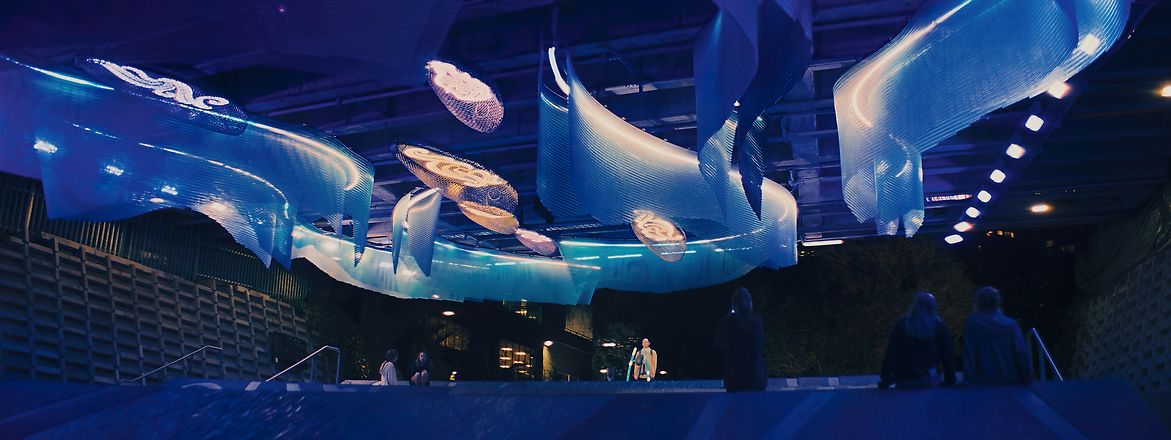
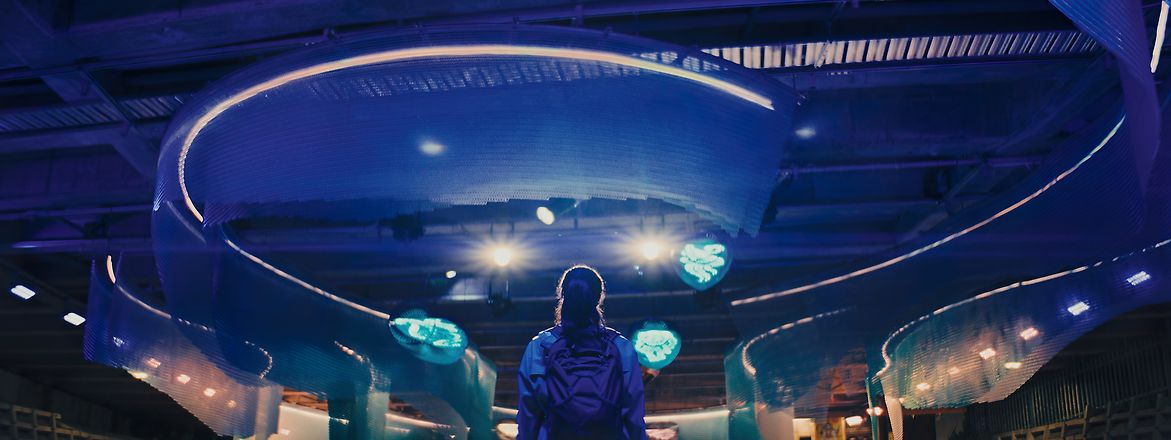
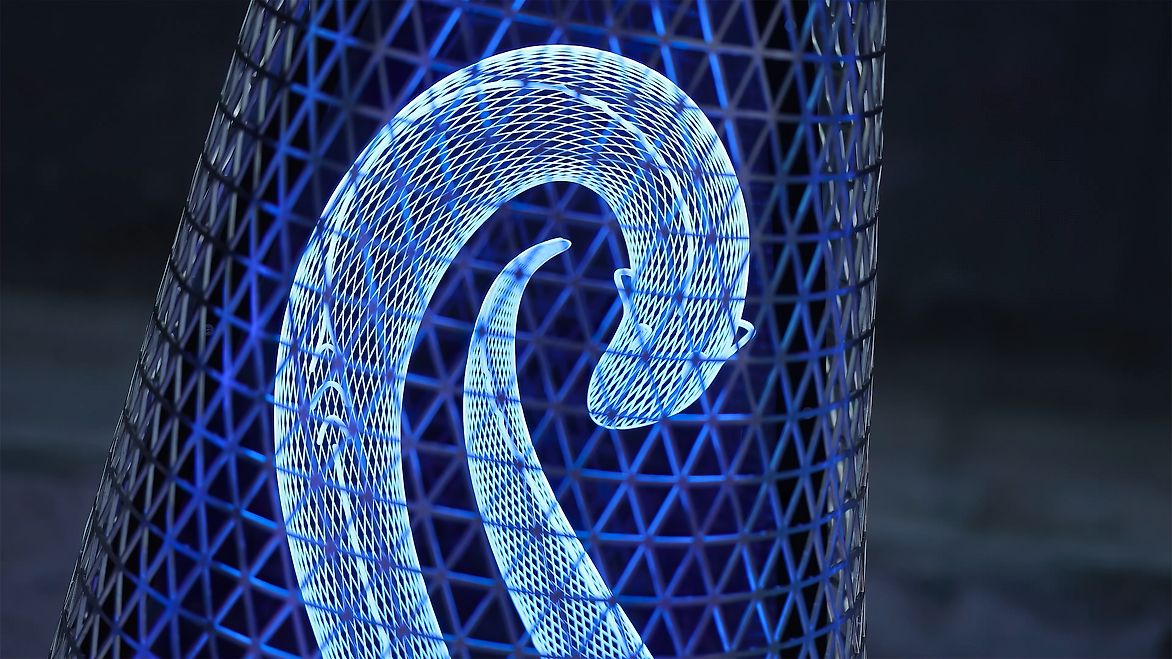
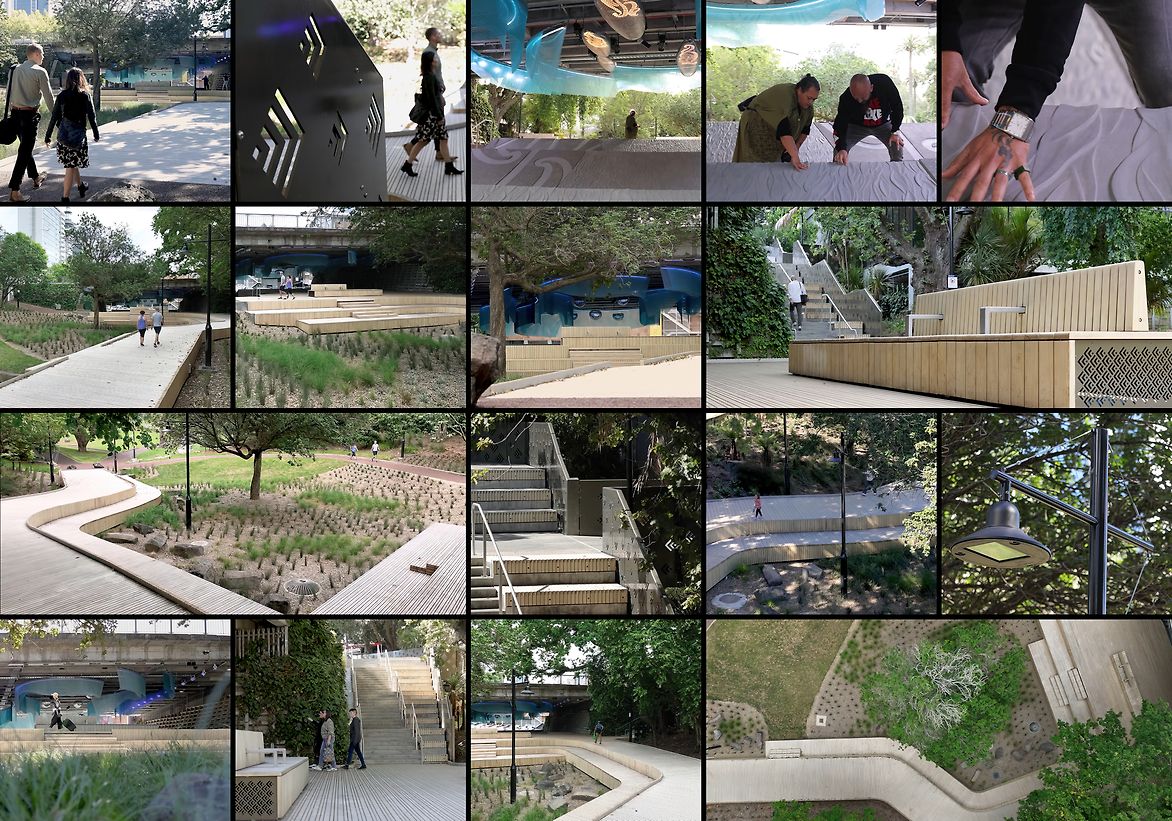
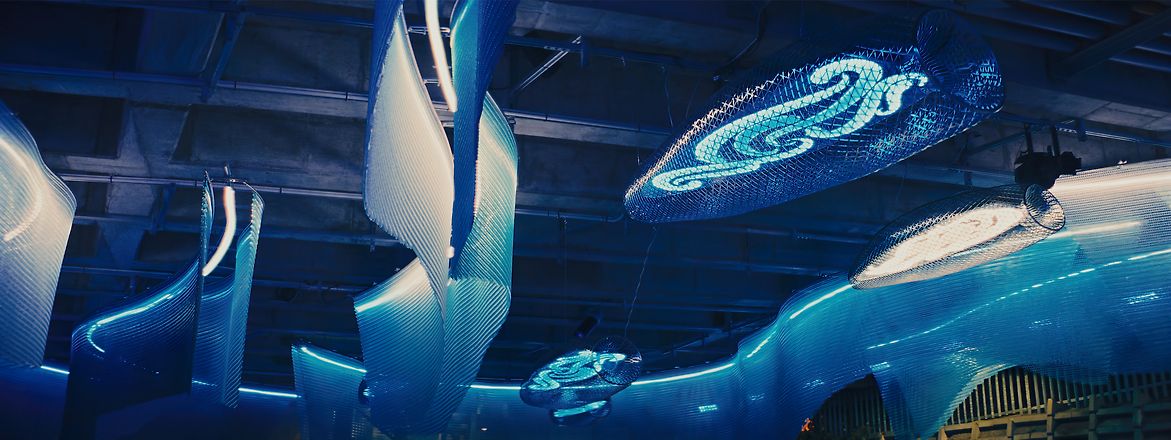
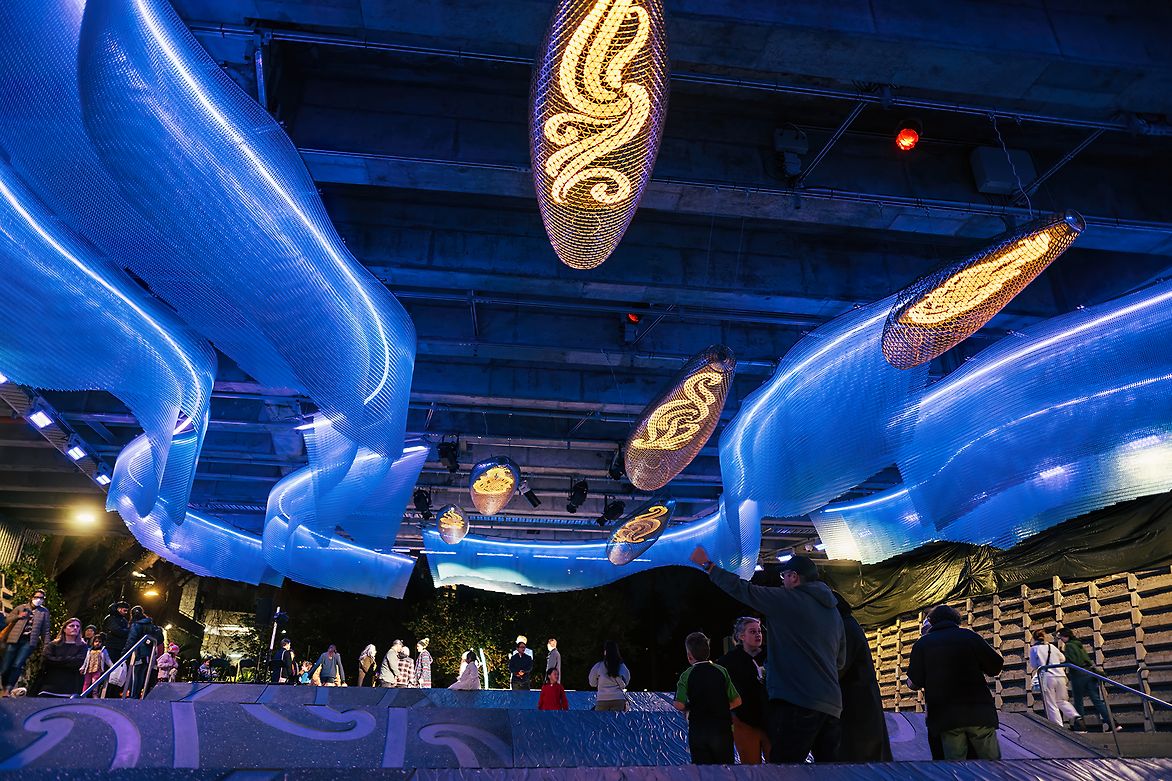
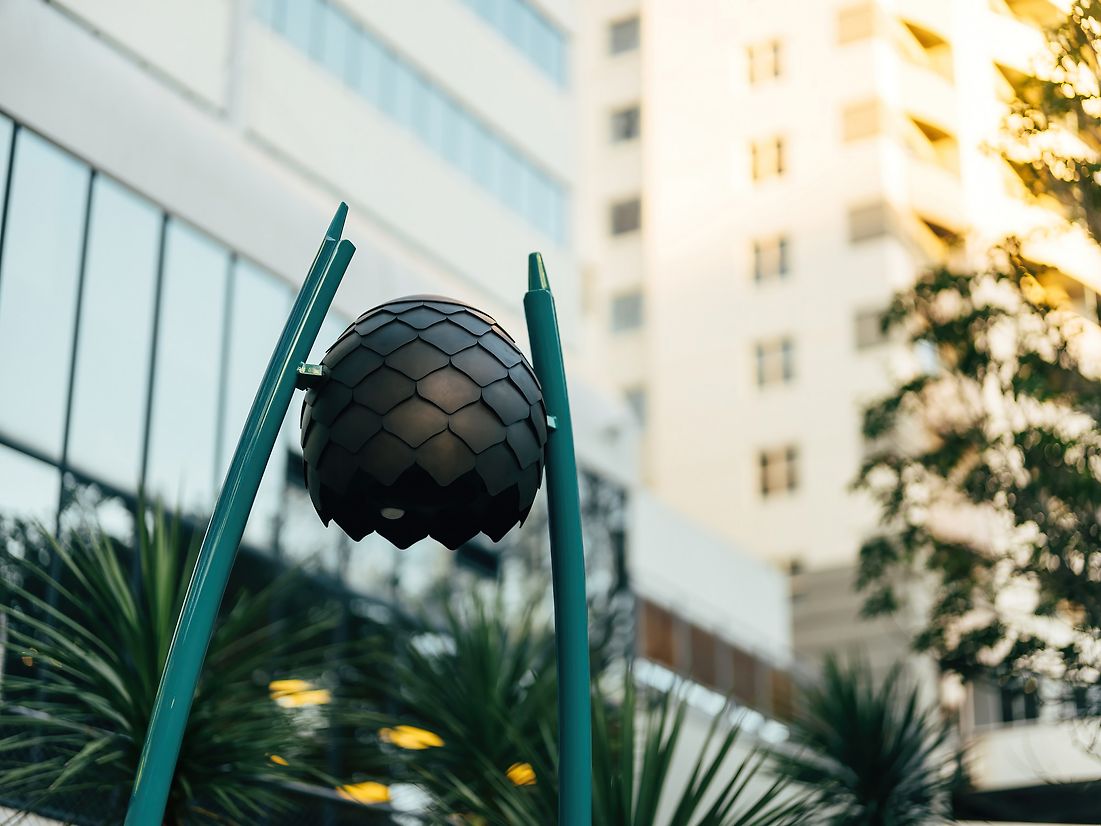
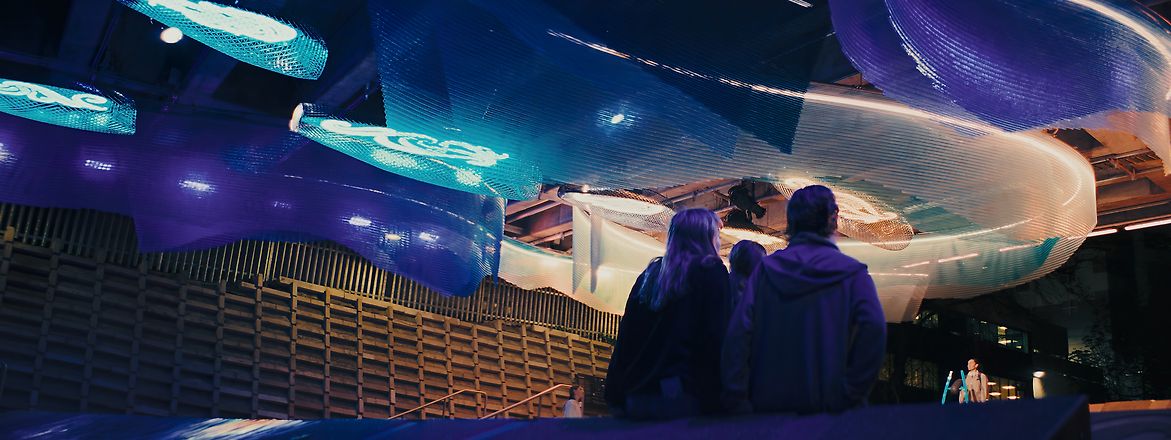
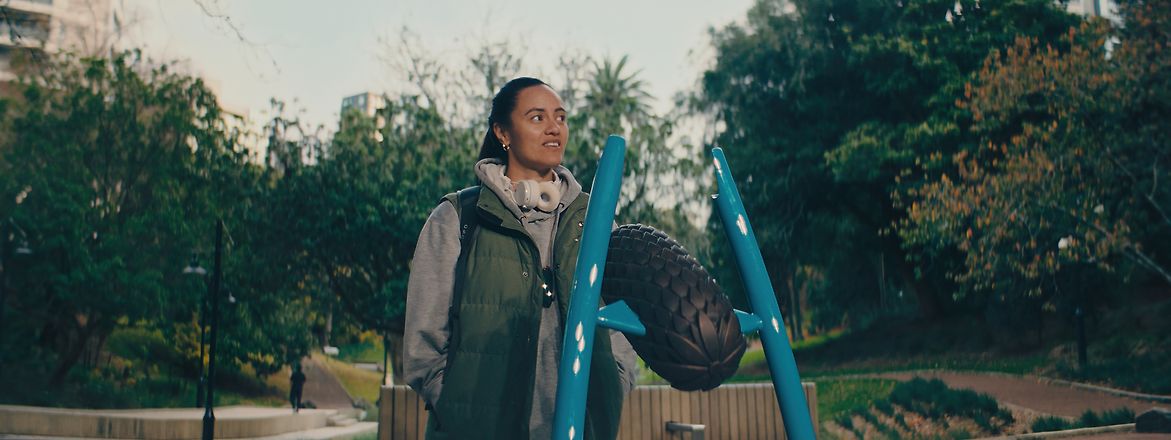
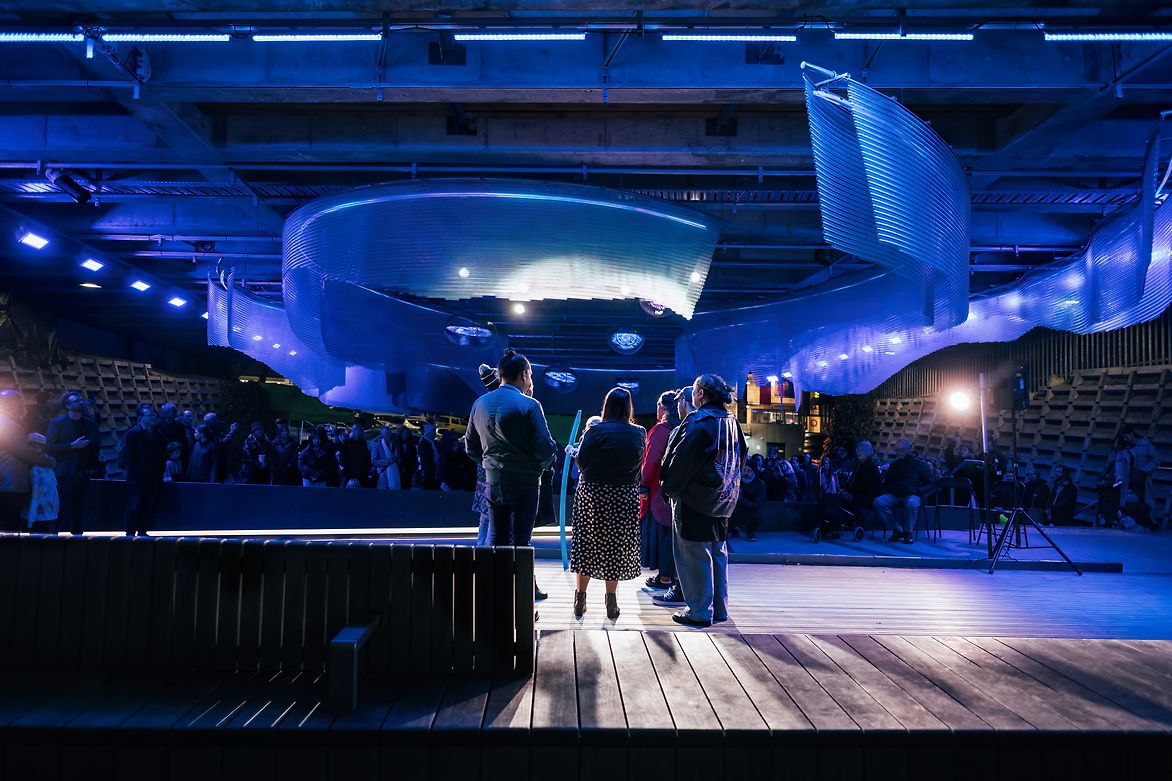
Description:
Waimahara, a digitally interactive environment, was developed as a new public artwork adjacent to Myers Park in Auckland’s CBD. Through sculptural form, light and sound, this installation artwork has transformed a hostile and unwelcoming inner-city underpass into a luminous environment that offers welcome to all, inviting visitors to linger, wonder, and engage – anytime of day or night. Waimahara’s cyclic audio and light programming creates a fluctuating experience, with this spatial artwork being responsive to changing weather, and the presence of visitors (manuhiri), delivering a modulated, site- and moment-specific designed experience.
The project’s kaupapa (intention) objectives focused on three dimensions: manaakitanga – making a place that welcomed everybody; honouring wai – water-centred Indigenous cultural perspectives and sustainability; and nurturing tikanga – encouraging the learning and performance of waiata to create a deep sensory (rongo) experience of place.
One Māori creative served as kaiurungi (lead designer), holding the project kaupapa objectives, guiding the creative development of the Waimahara concept, and onboarding mana whenua Māori artist expertise throughout the project. The kaiurungi and the team of mana whenua Māori creatives worked in partnership and collaboration with a client representative and a broad team of designers, fabricators and digital programmers, in leading the design development of this complex and multi-sensory public-space environment.
Waimahara conjures an experience of water flowing through a forested valley, with the underpass ceiling festooned with suspended hinaki-themed forms, illuminated by tuna (eels) and curving blue-green nets of Kaynemaile architectural fabric. An array of programmable lights and speakers soaks the visitor in an audiovisual atmosphere: audio compositions constituted from audible worlds of birds, water and taonga pūoro (traditional Māori instruments) evoke a forest in this “urban jungle” site. Two specially composed waiata – Waimahara and Waiora – evoke the physical, emotional, spiritual and cultural significance of water for Māori; the composers’ lyrics speak of how knowledge of the world’s creation was stored, with intention, by atua (gods) within the essence of water – and in turn within the human body, where that knowledge could be held safe.
Waimahara is interactive, responsive and immersive. The waiata can be learned onsite or through QR code-linked access to waiata-learning videos (support website). Those visitors who learn and perform the waiata into a sculptural sensor will, if they perform to the correct pitch and rhythm, unlock a much fuller music and light accompaniment than that experienced without this interactive engagement. Those who participate are rewarded.
The artwork also serves as a programmable performance environment – in the future, new creative projects will be developed for Waimahara.
Waimahara as a spatial design, describes the memory of water, and specifically of Te Waihorotiu, the stream that is now “imprisoned” in a pipe, and flows beneath the underpass site to the Waitematā Harbour. Like that awa, the artwork is alive, as the Māori artist team have created a multi-sensory spatial experience, where waiata learning and interactive participation lead visitors to a deeper sense of connection and belonging in this place.
Judge's comments:
Wonderful lighting extravaganza that holds its own even during the day. Thoughtful intervention in the forgotten and neglected space. It shows how creativity can shift the narrative and change the polarity of parts of the city.